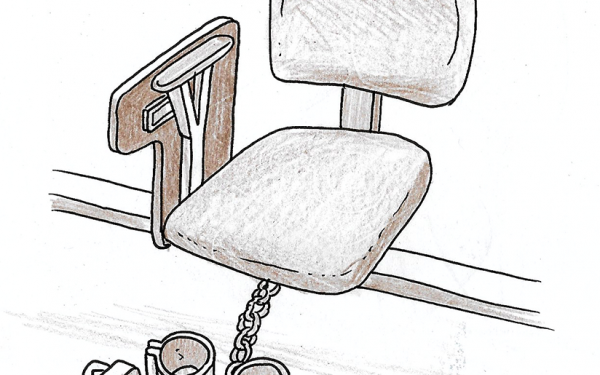After a Decline, Interest in Labour Reporting Appears to Be Growing
Journalists Reflect on The Future of The Beat and Where It’s Going
When 23-year-old Amina Diaby, a refugee and temporary worker at a Toronto-area industrial bakery died from a work accident, Toronto Star reporter Sara Mojtehedzadeh decided to go work undercover at the plant to find out more. As the “Work and Wealth” reporter there, she had spent three years researching and covering stories of precarious work in Canada.
Diaby’s death was not the first one at that plant. Two other temp workers had died at plants owned or affiliated to that same company.
Before going undercover, Mojtehedzadeh researched the increasing number of temp agency workers replacing full-time employees. Without being entitled to equal pay or the same benefits, temp workers represented a cheap source of labour, and in case of an accident, liability would fall back on the temp agency rather than the company. Visible minorities and non-status people were often the ones filling these positions, making it even harder for Mojtehedzadeh to find people willing to speak on the record about the dangers of their work. So she decided to go see for herself.
These types of investigations into poor working conditions have become rarer in Canada. Mojtehedazdeh is one of the few labour reporters left in Canadian mainstream news media, a beat that’s been strongly diminished over the last 25 years.
Her position was created after the Atkinson Foundation, a social and economic justice advocacy Ontario group, approached The Star with the idea in 2014.
Lynn McAuley, associate editor at The Star, said two things came together to create the position.
“As more and more people get temporary work and contract work, and part time work […] we felt we needed a reporter who would look at that,” McAuley explained. “At the same time, we have a close relationship with the Atkinson Foundation and it is also an area of high interest for them.”
McAuley said the partnership with the foundation provides financial support for the position, though they have no editorial say in what stories are covered and how.
This collaboration allows for the labour beat to continue at The Star, but many Canadian mainstream newsrooms have been running with fewer beat reporters.
For Brian Gabrial, a former TV news producer who spent the last 15 years teaching journalism in Canada and the U.S., it’s part of larger trend that has seen most of specialized reporting fade away.
“There are very few people that are assigned to beats at a newspaper anymore,” he said. “Unless you’re working for a bigger newspaper that still has them. Most reporters are on general assignment.”
The Gazette, for example, had a labour reporter until the 1990s. Since then, many of its beats have also disappeared, replaced by “clusters” that cover a wider range of subjects. It’s now their city reporters who cover strikes in Montreal. Other workers’ issues might also be covered by their business journalist.
Ronald Boiron, who works in media relations for the Quebec branch of the Canadian Union of Public Employees, said he doesn’t see enough sufficient coverage of labour news. “These days it’s rare to hear from anyone in the news media unless there is a conflict between workers and management,” he said. “And now it needs to be an important conflict, too.”
“These days it’s rare to hear from anyone in the news media unless there is a conflict between workers and management. And now it needs to be an important conflict, too.“– Ronald Boiron
Interest in labour reporting was a concern for news outlets, but it’s also no secret newsrooms have been shrinking.
“It’s all a matter of consolidating resources and making people who were still there do more work and other types of work,”said Gabrial. “It’s all about the money issue with newspapers. Broadcasting, too. They often had reporters that would cover a specific thing and they can’t afford to do that [anymore].”
Among the many reasons explaining the disappearance of the labour beat, labour historian Steven High noted it’s undeniable the influence of unions and the interest of the public has decreased since the 1980s.
“In the 1970s [unions] were very effective in politicizing a lot of issues and get a lot of public support,”said High. “In part because they would wrap themselves in a Quebec or a Canadian flag, and would frame the issue as ‘Canada versus USA’ if it was an American employer.”
High thinks the rise of free-trade and globalization have also participated in unions’ loss of influence and have impacted how labour issues are reported by the media and perceived by the public. “Now the government and the public’s response [to labour issues] is, ‘This is a private matter between an employer and their workers,’ and not a public issue.”
The privatization of worker issues happened alongside the delocalization of Canadian factories, which he said weakened local unions and their leverage on public opinion.
As divisions of corporations themselves, mainstream news organizations are generally wise enough to avoid covering labour issues from a business or managerial perspective, said Christopher R. Martin, a communication studies professor at the University of Northern Iowa.
In the book Framed! Labor and the Corporate Media, he argues papers tend to adopt the point of view of the consumer as their “common ground” narrative when discussing problems between workers and management.
But with this change of angle, part of the story is being left out.
“This shift in coverage of labour issues means that we don’t get the critical connection between labour unions and labour laws,” said Quebec-based writer Nora Loreto, editor of the Canadian Association of Labour Media. For instance, a 42-day strike of the Canadian Union of Postal Workers across Canada in 1981 was successful in winning improved maternity leave benefits.
Postal workers received 17 weeks of paid maternity leave and set a new standard for health benefits. In response, the federal government later improved the benefits offered by the employment insurance program.
With the decline of the beat, Loreto highlighted how labour stories now tend to be covered by reporters who don’t always have enough background knowledge to put current events into context.
“It’s important to have industry watchers in any case,” said Loreto. “But this one affects a lot of people in a lot of different ways, and journalists need to understand it fully to report on it.”
Through her undercover work, Mojtehedzadeh exposed the dangerous conditions that workers were put through on a daily basis and the lack of proper safety training. She has reported on hundreds of different stories over the last three years, ranging from daycare costs, to precarious jobs, to bullying in the workplace. Through her job, she also wants to show that labour reporting doesn’t have to be antagonistic to business interests, but that it has its own value.
“There is a need to look at those workers who are particularly precarious and vulnerable,” she said in an interview with Canadaland. “Some professions are not entitled to the minimum wage, to overtime, to rest periods, and those exceptions and how they affect people need coverage.”
After publication of the undercover story, several business owners reached out to her, saying the story had motivated them to make sure their own supply chains were treating their workers properly.
“I think there are a lot of business people out there who want an even playing field,” she said. “It’s interesting to talk to business owners who have been around and have seen the way our expectations of business as a society have changed.”
High has been studying labour movements for more than 20 years, but said that he’s received more interview requests from journalists in the last few months than ever before.
When General Motors announced it was closing its Oshawa, Ontario plant and faced the subsequent backlash from workers, High was interviewed more than 10 times in a single week, more interest that he’s ever received from the media.
He said he was pleased with the quality of their questions.“It wasn’t just a one-day hit [in the media cycle] because of the centrality of the auto industry in Ontario. But most labour issues don’t have that kind of duration and reporters can’t research their way into a story.”
For High, the longer coverage of the issue enabled much better reporting. “It was interesting to see the evolution of the discussion over that week. As people got familiarized, then it got deeper.”
The closing of the General Motors plant is an example of the ongoing change in Canadian industries. The automatization in factories, the general deindustrialization of the economy, and many other factors that are leading to the disappearance or precarization of jobs.
High believes the recent rise in right-wing populism, notably among the working class, comes from a place of anger and hopelessness caused by the impression that the rest of the population has been ignoring their needs.
“Reporters cannot disengage with what’s happening in the workplace and the wider class politics that are unfolding,” he said. “Class dynamics are re-emerging in a weird way, a racist way often, but the silence is starting to be broken which is positive.”

2web_900_616_90.jpg)



_600_375_90_s_c1.jpg)
